Sensor Sweep: Cosmic Horror, Red Harvest, Villains, Non D&D
Monday , 10, January 2022 Sensor Sweep Leave a commentHorror (Scream Archive): For this list, I’m focusing on ten of the best writers of terror who directly preceded or were contemporaries with HPL. Most of these authors had a direct impact on what would soon come to be known as the “Cthulhu Mythos.” And even those who didn’t would soon see literary (and eventually cinematic) progeny of their own.
Science Fiction (Ed Quit Smoking): Published in 1946 and edited by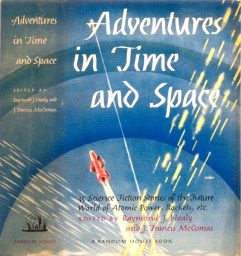 Raymond J. Healy and J. Francis McComas, Adventures in Time and Space (“35 Science Fiction Stories of the Future World of Atomic Power, Rockets, etc.”) is historically notable for being one of the first major collections of 20th century science-fiction in book form. Featuring stories from 1932 to 1945 (and mostly drawn from John W. Campbell, Jr.’s Astounding Science Fiction magazine), this anthology could be considered to be a good cross-section of stories from before and during the so-called “Golden Age” of sf, leading up to the end of WW II.
Raymond J. Healy and J. Francis McComas, Adventures in Time and Space (“35 Science Fiction Stories of the Future World of Atomic Power, Rockets, etc.”) is historically notable for being one of the first major collections of 20th century science-fiction in book form. Featuring stories from 1932 to 1945 (and mostly drawn from John W. Campbell, Jr.’s Astounding Science Fiction magazine), this anthology could be considered to be a good cross-section of stories from before and during the so-called “Golden Age” of sf, leading up to the end of WW II.
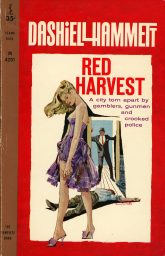 Fiction (Ricochet Reviewer): The Continental Op attempts to purge a town of the gangsters that control it by pitting them against each other.
Fiction (Ricochet Reviewer): The Continental Op attempts to purge a town of the gangsters that control it by pitting them against each other.
Popular Culture (Walker’s Retreat): Welcome back Daddy Warpig and Dorrinal as they return in 2022 to talk about the zombie franchises that just won’t die and whatever else they want to rant about.
Science Fiction (Wasteland & Sky): How much of “Science Fiction’s” supposed success came from anything other than greased palms and ideological subversion we might never know. Nonetheless, there is a reason none of it has ever stayed in the public consciousness the way Edgar Rice Burroughs, HP Lovecraft, or Robert E. Howard has. Once we accept that, we can accept a lot of other obvious truths from that era.
Writing (Alexander Hellene): There is a common cliché stating that a villain does not think of himself as the bad guy. This is, generally, an accurate assessment that is true to life. Did Adolf Hitler think of himself as “the bad guy”? Did Josef Stalin? Mao Zedong? Osama bin Laden? Napoleon Bonaparte? Saladin? You get the idea. Some actors throughout history—and fiction—are pure evil, and revel in the acts of destruction and death.
Fiction (With Both Hands): I want to talk about eucatastrophe in the Forgotten Ruin series. Forgotten Ruin is another creation of Anspach and Cole, but this one borrows heavily from both Dungeons and Dragons and J. R. R. Tolkien’s The Lord of the Rings. At the beginning, D&D had a lot of of LotR in it too, but a cease and desist letter put an end to that. However, it is pretty clear that the two things “nick”, the term used to describe when you combine two different lineages and get something that is greater than the sum of its parts.
New (Wasteland & Sky): Today I’d like to present you with the newest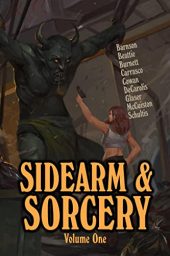 anthology I am a part of: Sidearm & Sorcery, a compilation of modern sword and sorcery style stories! This one has been in the works for awhile now, and I’m happy to finally present it to you today. Edited by StoryHack’s Bryce Beattie, Sidearm & Sorcery is a compilation of nine brand new adventure stories to get your blood pumping. There’s something in here for everyone!
anthology I am a part of: Sidearm & Sorcery, a compilation of modern sword and sorcery style stories! This one has been in the works for awhile now, and I’m happy to finally present it to you today. Edited by StoryHack’s Bryce Beattie, Sidearm & Sorcery is a compilation of nine brand new adventure stories to get your blood pumping. There’s something in here for everyone!
Reading (Crime Reads): Readers love to learn, but oh, how they hate to be taught! Our job as thriller writers is to entertain, not to preach. We recognize that our fans are not buying our novels to be “educated” on our worldviews, politics, and spiritual belief systems. And to that end, we give our readers permission to dislike or disagree with our character’s choices and conclusions. We trust our readers to decide if and how far they want to go on the journey of spiritual discovery with our characters.
Art (DMR Books): Gustave Doré was born on this date in 1832. Wildly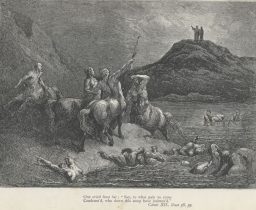 popular in his own lifetime, Doré’s art continues to grace book covers and galleries to this day. He laid many of the foundations of the fantasy art we enjoy right now in the twenty-first century. However, Gustave’s success was hard-earned and his legacy continues to be undervalued by elite art critics.
popular in his own lifetime, Doré’s art continues to grace book covers and galleries to this day. He laid many of the foundations of the fantasy art we enjoy right now in the twenty-first century. However, Gustave’s success was hard-earned and his legacy continues to be undervalued by elite art critics.
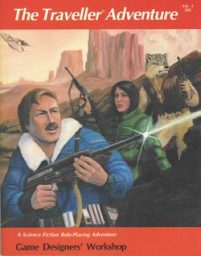 RPG (Grognardia): n a comment to My Top 10 D&D Adventures of the Golden Age (Part II), fellow blogger Adam Dickstein asked me to produce a similar list of my favorite non-D&D adventures. I thought that was an excellent idea and so spent the last week thinking about the matter, resulting in the list below, which I hope will be of as much interest as my previous one. This one is a little different than my D&D-centric one in that it’s not in any particular order.
RPG (Grognardia): n a comment to My Top 10 D&D Adventures of the Golden Age (Part II), fellow blogger Adam Dickstein asked me to produce a similar list of my favorite non-D&D adventures. I thought that was an excellent idea and so spent the last week thinking about the matter, resulting in the list below, which I hope will be of as much interest as my previous one. This one is a little different than my D&D-centric one in that it’s not in any particular order.
Gaming (DVS Press): This may sound a bit odd, but one of the unspoken goals of game design is to take as much of the player’s time as possible, or to put it another way, there is an in-built quest for efficiency with games regarding time. Sometimes, they advertise this by claiming the game has “a hundred hours of content,” or some such.
? (Pulp Rev): Wuxia and xianxia are inherently noble callings. Instead of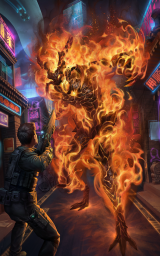 ‘knight’, I would insist that the Western equivalent is paladin. A knight is merely someone granted a title of knighthood. It is a social class, not a statement of morality, as the robber knights of the Rhine demonstrate. A paladin is a heroic champion, a protector of the innocent, and a defender of the faith. What does wuxia and xianxia fiction mean today?
‘knight’, I would insist that the Western equivalent is paladin. A knight is merely someone granted a title of knighthood. It is a social class, not a statement of morality, as the robber knights of the Rhine demonstrate. A paladin is a heroic champion, a protector of the innocent, and a defender of the faith. What does wuxia and xianxia fiction mean today?
Tolkien (Goodman Games): The Lord of the Rings remains the gold 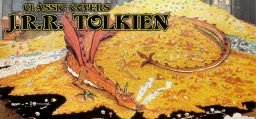 standard by which all other secondary worlds, and all other fantasy blockbusters, are judged. With covers ranging from the iconic to the iconographic, the literal to the surreal, many even featuring the art of the good Professor himself, and with editions spanning leather-bound limited-run collectibles to utterly ubiquitous mass market paperbacks, copies of Tolkien are as ever-present and universal in the physical world of books and book collections as the tales they tell are ingrained in the imaginations of modern readers.
standard by which all other secondary worlds, and all other fantasy blockbusters, are judged. With covers ranging from the iconic to the iconographic, the literal to the surreal, many even featuring the art of the good Professor himself, and with editions spanning leather-bound limited-run collectibles to utterly ubiquitous mass market paperbacks, copies of Tolkien are as ever-present and universal in the physical world of books and book collections as the tales they tell are ingrained in the imaginations of modern readers.
Celebrity (West Meath Examiner): There is also an O’Toole connection with Dunsany – one of his last movies was ‘Dean Spanley’, the movie based on writer Lord Dunsany’s ‘My Talks With Dean Spanley.’ Peter O’Toole and Sam Neill play leading roles in the movie released in 2008. Reincarnation and reconciliation form the heart of the new feature comedy-drama inspired by the 1936 novella by the 18th Lord Dunsany, Edward Plunkett.
Horror (Too Much Horror Fiction): 2021 was another year in which I’ve had more luck buying horror paperbacks than I have had in reading them.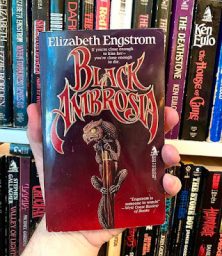 You’ve probably noticed the dearth of reviews on the blog. This year I started to read so many but gave up on them in a flash, realizing I’m having the same reaction to them as editors/critics like Karl Edward Wagner, Dennis Etchison, and Charles L. Grant had back in the day: the books I was reading were tired, dumb, lazily written, and/or noticeably cribbed from more popular works.
You’ve probably noticed the dearth of reviews on the blog. This year I started to read so many but gave up on them in a flash, realizing I’m having the same reaction to them as editors/critics like Karl Edward Wagner, Dennis Etchison, and Charles L. Grant had back in the day: the books I was reading were tired, dumb, lazily written, and/or noticeably cribbed from more popular works.
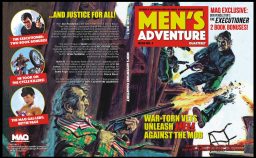 Review (Chimney Sweep Reader): The third edition of the Men’s Adventure Quarterly magazine is yet another fine addition to the stable. Whereas the first volume was devoted to Westerns and the second to Espionage, this third volume focuses squarely on vigilantes. All of the content, prose and artwork, is sourced from the men’s adventure magazines (MAMs) of the 1950’s, 60s’ and 70’s.
Review (Chimney Sweep Reader): The third edition of the Men’s Adventure Quarterly magazine is yet another fine addition to the stable. Whereas the first volume was devoted to Westerns and the second to Espionage, this third volume focuses squarely on vigilantes. All of the content, prose and artwork, is sourced from the men’s adventure magazines (MAMs) of the 1950’s, 60s’ and 70’s.
Fiction (Paperback Warrior): Morrell authored First Blood in 1972, the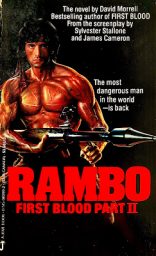 book from which the 1982 blockbuster film was derived from. That book is much different than the film, as I explained in my review. Mostly, Rambo is a more arrogant, cocky kid in the novel and at the end of the book ***spoiler alert*** Rambo dies. In the film, he doesn’t.
book from which the 1982 blockbuster film was derived from. That book is much different than the film, as I explained in my review. Mostly, Rambo is a more arrogant, cocky kid in the novel and at the end of the book ***spoiler alert*** Rambo dies. In the film, he doesn’t.
RPG (Swords and Stitchery): China Sea War is a 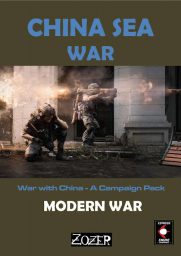 campaign premise for Zozer Games’ Modern War RPG. It is a tool-kit that provides various situations, mission ideas and squad templates that allow players to fight the Chinese invaders in one of several national armies, at one of several battlefronts, each different from the rest. China Sea War includes new vehicles, new weapons and a list of national armies and deployed units.”
campaign premise for Zozer Games’ Modern War RPG. It is a tool-kit that provides various situations, mission ideas and squad templates that allow players to fight the Chinese invaders in one of several national armies, at one of several battlefronts, each different from the rest. China Sea War includes new vehicles, new weapons and a list of national armies and deployed units.”
Fiction (Pulp Net): Here we have the fifth collection of Solar Pons tales by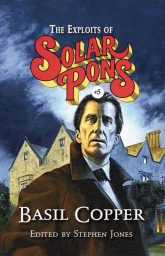 Basil Copper, The Exploits of Solar Pons. While it was planned as part of the Pinnacle series, it never happened. If you read the Companion volume, you’ll get the full story. It wouldn’t finally be published until Fedogan & Bremer published it in 1993.
Basil Copper, The Exploits of Solar Pons. While it was planned as part of the Pinnacle series, it never happened. If you read the Companion volume, you’ll get the full story. It wouldn’t finally be published until Fedogan & Bremer published it in 1993.
Art (DMR Books): Patrick John Monahan (Sullivan) was born on this date in 1882. The son of Irish immigrants, he lost nearly his entire family to a flu 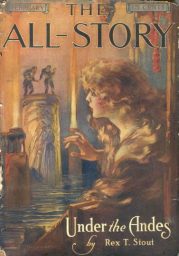 epidemic. He was taken in and adopted by a neighbor family, the Monahans. Patrick showed early artistic promise and was painting covers for top-tier magazines by the time he was twenty-five. At that point, he counted luminaries like Jack London, Dana Gibson and Norman Rockwell among his friends. His life was already half over.
epidemic. He was taken in and adopted by a neighbor family, the Monahans. Patrick showed early artistic promise and was painting covers for top-tier magazines by the time he was twenty-five. At that point, he counted luminaries like Jack London, Dana Gibson and Norman Rockwell among his friends. His life was already half over.
Cinema (Don Herron): Cabot would have made a more authentic tough guy than Ladd in the role, but at over 6’1″ he wasn’t short and he wasn’t fat — not that I would expect Hollywood to cast some short fat actor in the gumshoes of the Continental Op. Even today. His IMDb page is interesting. Best known (if known at all) as the manly swab Jack Driscoll opposite Fay Wray in the 1933 King Kong — but what a toehold on cinematic history. Apparently auditioned for the role of Ringo Kid in Stagecoach, but lost it to John Wayne.
Outdoor Gear (Frontier Partisans): After all, the Field Blazer has been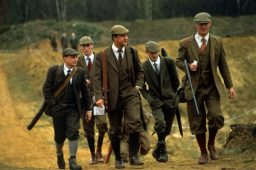 deployed by some of history’s most renowned Frontier Partisans, from Boer War commandos to Mexican Revolutionary fighters. And, of course, it is a staple of British shooting/hunting tradition.
deployed by some of history’s most renowned Frontier Partisans, from Boer War commandos to Mexican Revolutionary fighters. And, of course, it is a staple of British shooting/hunting tradition.
Please give us your valuable comment